Now that it’s summer and the water is warm, Zara and I have started focusing on duck search training. Duck search is otherwise known as “search for a duck,” and is one of the four main components of the NAVHDA Utility Test.
According to the NAVHDA Aims Programs Test Rules booklet, during the test, “with dog and handler both out of sight, a healthy pen-raised mallard..is rendered flightless…One of the Judges will toss the duck out well into or past the cover at the edge of the water…the handler and dog are called up and the dog is placed in position off-lead….The handler will fire one blank shot over the water and send the dog…The capable dog will systematically search likely cover and…will find and follow the scent path left as the duck moves through the aquatic cover and over stretches of open water. If the scent is lost, the dog should not mill around aimlessly at the spot, but should start a systematic search to relocate the scent. Each dog is allowed approximately ten minutes to search out the duck…If the opportunity for a retrieve occurs, such as the duck being caught or shot, the retrieve must be successfully completed.”
Some of the more important aspects of a successful duck search are independence (ability of the dog to go away and probably out of sight of the handler) and an expanding search. The dog shouldn’t focus on a small area of the pond. Once an area is thoroughly checked, the dog should expand their search to a wider/further area.
Last Year’s Mistakes
Duck search is scored from 0 to 4, and you must get at least a 2 to pass the Utility Test and a 4 to get a Prize 1 (highest prize). When Zara and I ran in the UT test last October, she got a 1 in duck search, which was the reason we didn’t pass. Although we practiced for the duck search, I did not have a concrete training strategy last year. I figured she would be fine, because she naturally had the initiative to go out and search. She did multiple duck searches before the test and always seemed to search well. But now I realize that there were holes in this method.
During training, the ducks were always placed fairly close to the send-off point and although Zara was always searching the whole time, she never really showed a vast expanding search. Some of the other dogs we trained with would take off when released and it would be hard to get them back, because they’d be halfway across the swamp. Zara tended to stay closer.
On test day, the duck was placed much further out and there was no wind, which meant that she had no scent to pick up on after I sent her. She went out, but came back pretty quickly and didn’t seem to know what she was looking for.
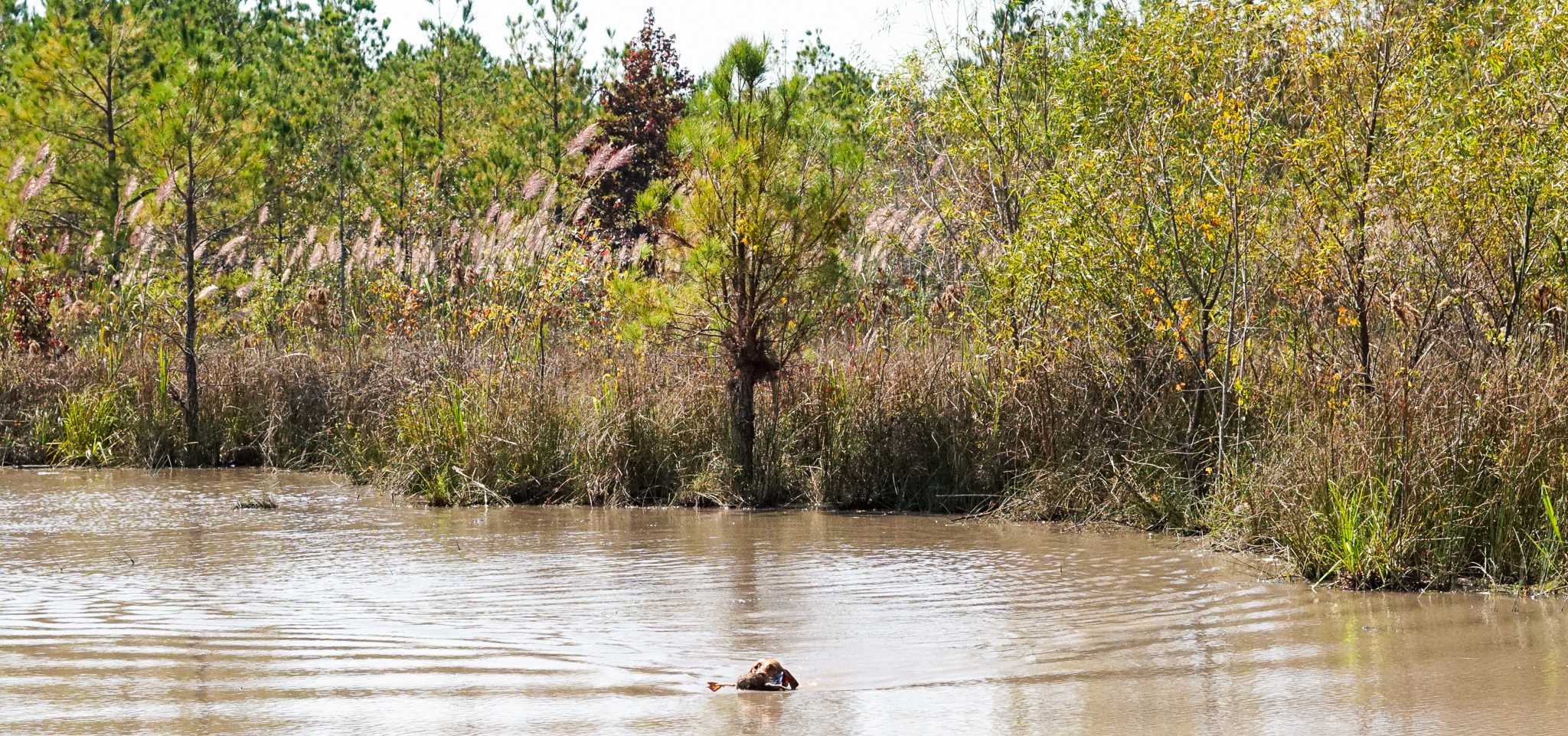
Zara returns with duck during duck search training in 2019.
Duck Search Clinic
Last month, I attend a duck search clinic at Rusty Guns Kennel, which is owned by Scott and Kyley Caldwell. Their farm is where our NAVHDA chapter training days and tests are held. Given that duck search was our weakness last year, I wanted to learn more about their training strategy and see how that could help me train Zara.
The clinic was held over two days and went into detail about the duck search, how it is judged, and how Scott and Kyley train dogs to do consistently good duck search. Although we were able to bring our dogs, I wasn’t able to bring Zara due to her tooth fracture.
An important takeaway was the role that a force fetch/consistent retrieve program plays into a successful duck search. A dog that is conditioned to retrieve in various contexts can be sent into the water and expected to search for an object (duck) to retrieve. A key aspect of this is doing long (50 yard plus) blind retrieves, where the dog is sent to retrieve something it cannot see. Over time and repetitions that get further and further away, the dog trusts that there will be something for it to retrieve when the handler gives it the command to fetch.
That makes a lot of sense to me, since if you can ensure that your dog will go out 50ish yards when you send them into the swamp, they’re likely to cover a good amount of ground and possibly pick up the scent of the duck. More likely than if they were hanging around the shore.
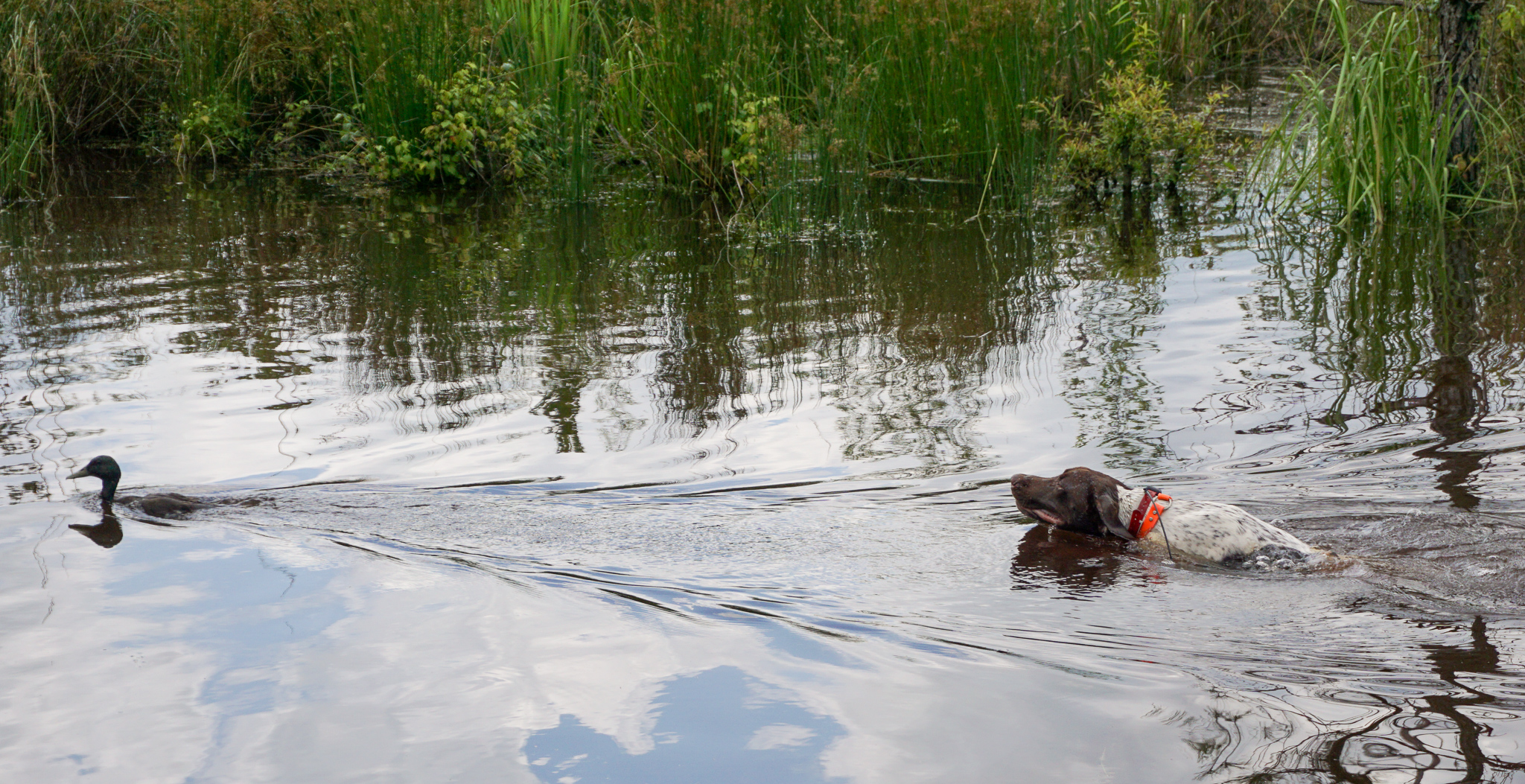
A German Shorthaired Pointer chases a duck during the duck search clinic.
Duck Search Practice
So far, Zara and I have done three duck searches this season. During the first one, I had one of the guys we were training with drag the duck out from the shore to leave a bit of a scent trail, since it was the first time that Zara had done a search in more than six months. She successfully followed the scent and located the duck. She retrieved it back to me, and then went back out again on her own accord. However, she didn’t expand out super far.
The second time, I went to visit Emily of Shorthairs & Shotguns and Grayson at Lost Highway Kennels. Grayson walked out into the swamp and placed a duck about 50 yards out. Again, Zara had a fairly easy time locating the duck, but I believe she was able to follow the scent from the shore.
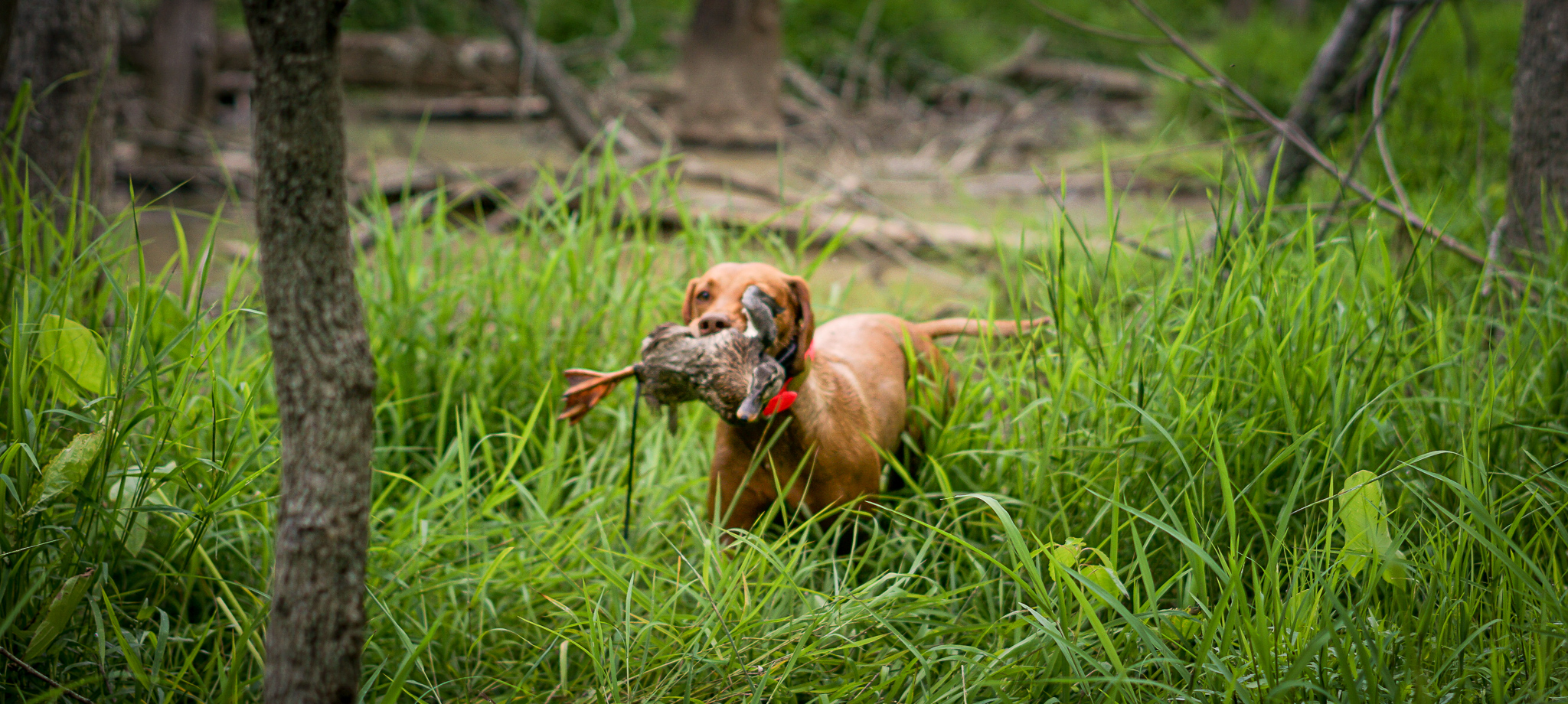
Zara retrieves a live duck during duck search training.
Last weekend, we did our third duck search of the season. This time, I wanted to see what Zara would do without any scent from the send-off point. I had a friend we were training with, Wes, paddle out away from shore in a boat and place the duck about 50 yards out. Zara struggled with this. I sent her and she went out, obviously searching for the scent with her nose. After searching the area near the shore, she seemed unwilling to go out any further. I asked Wes to go out in the open area of the pond and encourage Zara to come with him. He did so and Zara followed, eventually picking up on the scent of the duck and bringing it back. She went out again and found the other duck, again with a little bit of help from Wes.
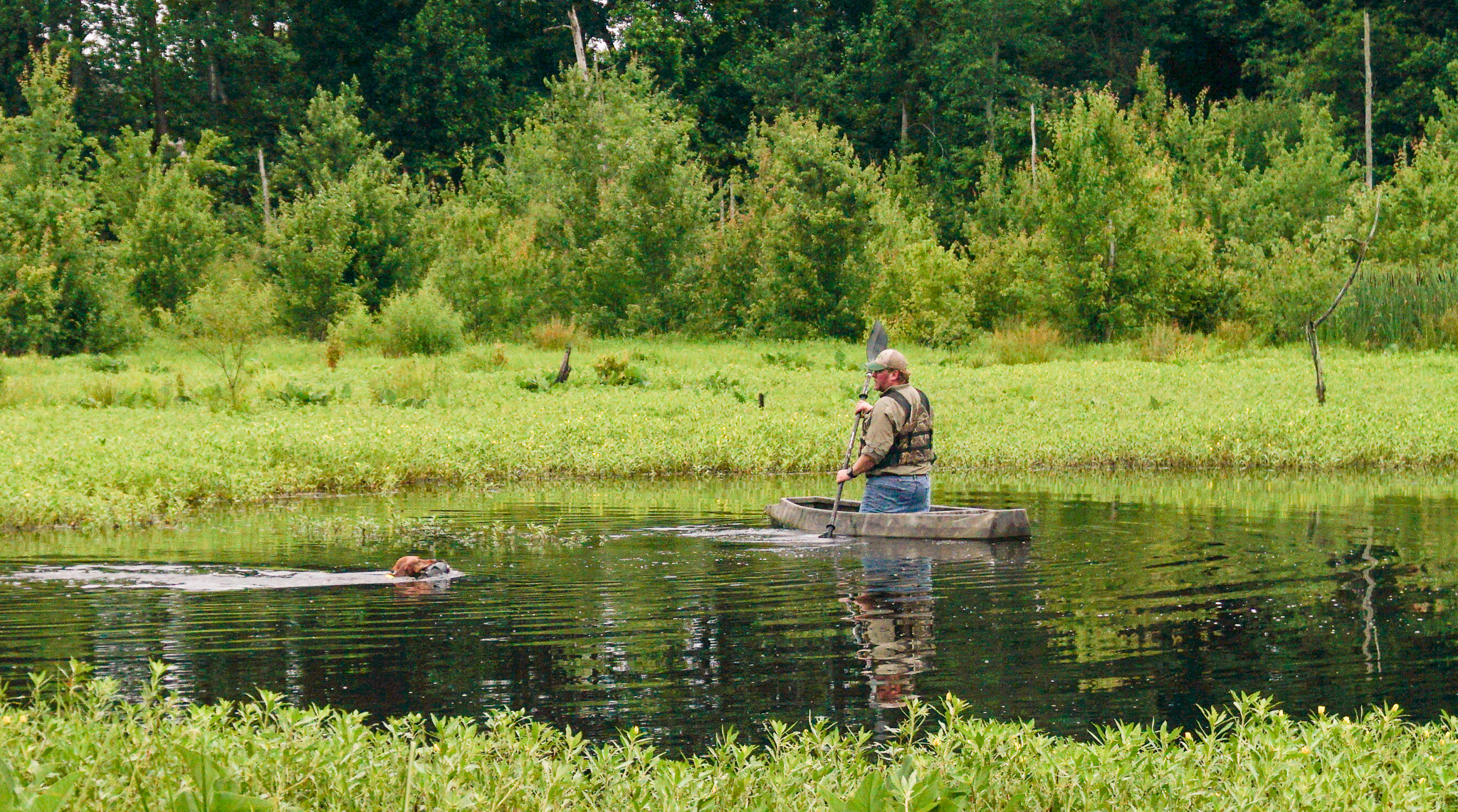
Zara gets a bit of assistance in her search.
Work to Do
After seeing how Zara did on these last three duck searches, I’m even more convinced that the main thing I have to worry about is her expanding her search/not going out far enough if she can’t smell the duck. This is exactly what happened at the UT test last fall.
I’ve started to try the technique of doing long blind retrieves to see if that helps. Although I’ve done blind retrieves on land and Zara understands the concept, I had not done them in the water. I’ve started doing short blind retrieves in the water, where Zara is out of sight when I throw the objects, but can see them fairly well when I bring them to shore. I need to start increasing the distance and throwing them where she can’t see them at all.
Is anyone else who is training for duck search at the Utility Test having this same issue? Let me know!





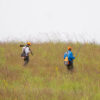

I’m having a similar issue. Our training season was cut short due to COVID. We’ve had a kayak for about a month. Sometimes she seems to get it but sometimes, it is difficult to get her to expand her search. She is my competitive obedience dog. I don’t know if that impacts her independence. I have been letting her carry the ducks around the parking lot after she gives them to me hoping to get her fired up. She has a soft mouth and they are uninjured. We are entered in a test in a couple of weeks. I doubt that we will be ready. She has no issue of leaving me on the duck drag and seems to really like that skill.
Hi! I think obedience can definitely play a role in it. Zara is also very obedient and we didn’t start training for duck search until she was 5 years old. So she was already very obedient and used to checking in with me a lot. This makes her better with things like the steady by the blind and in the field but the drawback is duck search. Alternatively, I’ve seen dogs who have awesome duck searches and will just disappear into the water and be gone for 10 minutes but they have more of an issue with steadiness. So it can be a tradeoff. I hope your test goes well! Maybe she will catch scent and expand out on test day, you never know! But don’t feel bad if that’s not the case, we failed last year because of it. :) You can always test again!
I don’t know if you tested Zara again already or how she did. But something that may help would be to start her out by throwing out a bunch (15 or so) bumpers or tennis balls randomly and sending her to get them.
She gets rewarded with a retrieve and pretty instant gratification at first giving her confidence to keep looking. Over time lessen the number gradually to one that’s hidden. By then she should have confidence to search hard knowing that doing so will reward her with a retrieve. Plus unless you have your own ducks you can do this more regularly and consistently which will also help with her confidence.
I used tennis balls in this manner with my lab since they are a reward object to teach him to “hunt the area of the fall”. He’s a nonslip retriever but the concept is the same. It’s also how I will train the duck search for my pudelpointer puppy that I’m about to pick up.
Just an idea.
Hey Austin! That is a good idea. I’ve done something similar with birds in the yard, or pieces of food in the house. I’m trying to condition her to the phrase “find it” because that’s what I’m using for duck search now. I just used to use “fetch” but I’m confident that if she finds a duck she will fetch it, without me having to say it. Occasionally I’ve used bumpers but I don’t know if they smell as much.
I have been looking for more tips/ideas on duck search and plan to test in 2023 with my DD which will be 2.5 years old. I duck hunt and the few times that took her out she failed to mark well so about half her retrieves were duck searches.
My method to get her confidence to search.
Lots of blind work (my other dog is a American Water Spaniel and I trained him retriever style handling but it’s important that she does not look to me for direction since that not a proper duck search.
1. I walk a dead duck or bumper out and just drop it while dog watches or is on heel. I line dog up and send it on “back” at first I walk straight out then I start walking a circle with dog sitting and watching.
2. I started doing it with a long delay with the with dog sitting on a place board waiting.
3. I do same thing but place take dog inside and crate it for a time period then come back
During all of these process, I slowly make distance farther. I just got to about 100 yards and have the duck not directly in line with my send.
I am at the point now that I take duck out and place as a true blind then go get the dog. I heel the dog in general direction and do “dead bird, back” everytime.
I have noticed my dog orginally searched water more confidently than land so I want to build up her land confidence as I can do blinds daily at my house along with drags. Hardest part on land is if she gives up she wants to heel to me with no duck. I have about over come that hurdle and plan to duck hunt her hard this fall then start working again in the spring (I am in Southern Utah so Its pretty warm in Feb/March. I plan to repeat above at the water but placing majority of the ducks across the water on the opposite bank to 50 yards up it to help her expand.
I have always used actual birds. I want my dog to thing an actual birds our there everytime I send her out. I use frozen ducks so I can reuse them. I am training it without a gun shot and start adding re-sends for multiple birds. The gun shot just excites her more so if she can do it without a shot with a shot should be easier.
That’s been my method to the madness and we will see how things turn out next summer.